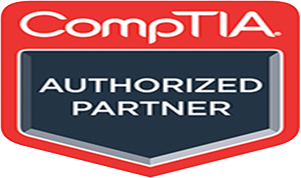Preparing for the CISO Role

Leadership is not an innate talent but a skill that can be cultivated through practice, training, and experience. While some individuals may have natural leadership attributes, anyone can develop the capabilities necessary to excel in a security leadership role.
As security professionals progress in their careers, the appeal of leadership positions, particularly that of a Chief Information Security Officer (CISO), often grows. However, transitioning from a technical role to a leadership position requires deliberate effort and the development of new competencies.
Develop Leadership Skills Through Practical Experience
One of the most effective ways to build leadership skills is by actively seeking opportunities to lead. Engaging with professional organizations like ISACA can provide an excellent training ground, offering board and committee roles where members gain hands-on experience in governance, strategy, and management.
Serving in volunteer-led environments sharpens critical leadership abilities. When leading volunteers, traditional motivators like financial incentives or positional authority are absent, requiring leaders to master persuasion, diplomacy, and inspiration—all essential traits of an effective CISO.
Organizing events, managing chapter finances, and shaping strategic initiatives within ISACA or similar organizations are invaluable exercises in leadership development.
Master the Fundamentals of Leadership
Leadership is about more than authority—it’s about influence. Security leaders must balance technical expertise with the ability to inspire and motivate teams while driving organizational change.
Jim Kouzes and Barry Posner’s The Five Practices of Exemplary Leadership provide a strong foundation for leadership growth:
- Model the way – Lead by example, demonstrating integrity and commitment.
- Inspire a shared vision – Communicate a compelling vision of security’s role in the business.
- Challenge the process – Encourage innovation and continuous improvement.
- Enable others to act – Foster collaboration and empower teams.
- Encourage the heart – Recognize and celebrate achievements.
A CISO serves as both a diplomat and an ambassador for security, educating the business about risk while advising on strategies to mitigate threats. Developing these leadership qualities is key in preparing for an executive role.
Become a Skilled Communicator
Effective communication is one of the most critical skills for security leaders. A CISO must translate technical risks into business language, making cybersecurity understandable and actionable for executives, board members, and stakeholders.
To excel, professionals should focus on:
- Communicating upwards – Engaging executives and board members by aligning security with business priorities.
- Communicating across teams – Collaborating with IT, legal, compliance, and other departments to integrate security into all aspects of the business.
- Influencing without authority – Persuading stakeholders to support security initiatives despite competing priorities.
Practicing public speaking through ISACA chapter events, Toastmasters, or executive training programs can significantly improve communication skills.
Strengthen Business Acumen
A successful CISO is a security expert and a business leader. Security professionals should develop a strong understanding of:
- Risk management – How security risks impact business objectives.
- Financial acumen – Managing budgets and making the case for security investments.
- Regulatory and compliance knowledge – Navigating frameworks like NIST CSF, ISO 27001, GDPR, and CMMC.
By aligning security with business goals, CISOs can advocate effectively for cybersecurity initiatives and demonstrate their value to the organization.
Cultivate Critical Thinking and a Strategic Mindset
Security leaders must think beyond daily operations and focus on long-term organizational resilience. This requires:
- Anticipating emerging threats – Staying ahead of cyber threats and industry trends.
- Making data-driven decisions – Leveraging threat intelligence and risk assessments to inform strategy.
- Building resilient security programs – Moving beyond reactive security measures to proactive resilience strategies.
Embrace Continuous Learning
Leadership and cybersecurity are fields that constantly evolve. Security professionals should commit to ongoing education by:
- Pursuing certifications – Earning credentials like CISSP, CISM, CCISO, or CRISC.
- Attending conferences and webinars – Engaging with the latest research and industry thought leaders.
- Enrolling in leadership training – Executive leadership programs or business management courses can be highly beneficial.
Alternative Career Paths If CISO Is Not a Fit
However, at the same time, if security professionals prefer a more technical or specialized role, several alternatives exist:
- Security Architect / Cloud Security Architect – Focus on designing and implementing secure enterprise architectures.
- Security Consultant / Virtual CISO (vCISO) – Provide security advisory services to organizations on a consulting basis.
- Threat Intelligence / SOC Director – Lead security operations, incident response, and threat-hunting teams.
- Risk & Compliance (GRC Lead, Auditor, Privacy Officer) – Specialize in regulatory compliance, security governance, and policy development.
- Security Researcher / Ethical Hacker (Red Team, Pentester) – Engage in penetration testing, red teaming, and security assessments.
Becoming a CISO or security leader requires a holistic approach that blends technical expertise, leadership acumen, business strategy, and communication skills. By gaining hands-on leadership experience, developing critical competencies, and committing to continuous learning, security professionals can position themselves for success in executive roles.
A successful CISO is not just a security expert—they are a trusted advisor, strategic thinker, and leader who drives organizational change. Leadership is not a destination but an ongoing growth, adaptation, and impact process.














